2017-12-28 - Nº 139

Editorial
Esta é a Newsletter Nº 139 que se apresenta com o mesmo formato que as anteriores. Se gostar da Newsletter partilhe-a!
Todas as Newsletters encontram-se indexadas no link.
Esta Newsletter tem os seguintes tópicos:
Faz hoje anos que nascia, em 1873, William Draper Harkins. Este químico nuclear norte-americano que foi um dos primeiros a investigar a estrutura e as reações de fusão do núcleo. Em 1920, Harkins previu a existência do neutrão, posteriormente descoberto pela experiência de Edwin Chadwick. Ele fez estudos pioneiros de reacções nucleares com câmaras de nuvens de Wilson. No início da década de 1930, (com M.D. Kamen) construiu um ciclotrão. Harkins demonstrou que, nas reacções de bombardeamento de neutrões, o primeiro passo na captura de neutrões é a formação de um "núcleo excitado" de vida útil mensurável, que posteriormente se divide em fragmentos. Ele também sugeriu que a energia subatómica poderia fornecer energia suficiente para alimentar o Sol ao longo da sua vida.
Faz também anos hoje que nascia, em 1903, John von Neumann. Este Matemático húngaro-americano que fez importantes contribuições em física quântica, lógica, meteorologia e informática. Ele inventou a teoria dos jogos, o ramo da matemática que analisa a estratégia e agora é amplamente empregado para fins militares e económicos. Durante a Segunda Guerra Mundial, ele estudou o método de implosão para levar o combustível nuclear à explosão e ele participou do desenvolvimento da bomba de hidrogénio. Ele também estabeleceu a teoria quântica em uma base matemática rigorosa. Na teoria do computador, von Neumann fez grande parte do trabalho pioneiro no design lógico, no problema de obter respostas confiáveis de uma máquina com componentes não confiáveis, a função de "memória" e a imitação de máquina de "aleatoriedade".
Faz igualmente hoje anos que nascia, em 1929, Maarten Schmidt. Este Astrónomo americano nascido na Holanda descobriu os quasares (objectos quase estelares). O espectro de hidrogénio desses objetos estelares mostra um enorme desvio para o vermelho, o que indica que eles estão mais distantes do que as estrelas normais, viajando a uma velocidade maior e estão entre os mais antigos objectos observados. Por sua vez, isso indica que eles existiam somente quando o universo era muito jovem e fornece evidências contra a teoria do estado estacionário de Fred Hoyle. Schmidt continua o seu trabalho tentando encontrar o desvio para o vermelho acima do qual não há quasares, e ele também estuda fontes de raios-x e raios gama.
Faz também anos hoje que nascia, em 1944, Kary Mullis. Este bioquímico norte-americano inventou a reacção em cadeia da polimerase (PCR) em 1983, invento pelo qual partilhou (com Michael Smith) o Prémio Nobel de Química de 1993. A técnica de PCR é simples, e dentro de algumas horas pode fazer biliões de cópias de uma fita específica de ADN. É uma ajuda poderosa no diagnóstico médico de uma infecção bacteriana ou viral, capaz de usar uma amostra muito pequena de material genético para identificar o agente causador. O PCR é valioso na genética e na ciência forense. Com o seu uso, os distúrbios genéticos podem ser identificados a partir de amostras de ADN. Usando minúsculos vestígios de tecido, a PCR pode produzir ADN suficiente para identificar pais e parentes da família, suspeitos de crime, cadáveres, restos fósseis antropológicos ou antigos. O PCR também é uma ferramenta básica no sequenciamento de genes.
Por fim, faz anos hoje que nascia, em 1969, Linus Torvalds. Este cientista informático finlandês ficou conhecido por ter criado e promovido o sistema operativo Linux. Enquanto estudante de informática, ele criou seu próprio sistema operativo UNIX no seu próprio computador pessoal porque ele estava insatisfeito com a forma como o Microsoft MS-DOS funcionava. Em 1991, ele tinha desenvolvido o suficiente para partilhar o sistema com o código-fonte com outros programadores de software, para usarem gratuitamente e ajudarem em melhorias ao mesmo. Este é o modelo open-source do desenvolvimento de software. O Linux, sendo livre de usar, é actualmente o sistema operativo de escolha para muitos servidores, sites na Internet, dispositivos móveis e embebidos.
Esta semana ficámos a saber que a China está a construir a primeira auto-estrada com painéis solares embutidos. A Jinan South Ring Expressway tornar-se-á a primeira auto-estrada do mundo onde se realiza R&D de colocação foto-voltaica. A electricidade gerada a partir de pavimento fotovoltaico está ligada a baterias. No futuro, também pode ser possível carregar e mover veículos para que o pavimento fotovoltaico se torne o "fluxo de energia eléctrica do veículo". Em Dezembro passado, a empresa francesa de construção Colas, implementou pela primeira vez uma estrada foto-voltaica de 1 quilómetro na estrada secundária da cidade francesa de Tourouvre au Perche, na Normandia, e deverá fornecer a iluminação pública da cidade com 3.400 habitantes.
Ficámos também a saber que esta quinta-feira passará muito próximo da Terra o asteróide 2017 YZ4. Estando a viajar a velocidades perto de 34.000 km/h este asteróide tem a dimensão de um autocarro de dois andares e causaria danos consideráveis se atingisse o planeta. Começou a ser observado no passado dia de Nata e passará entre a Terra e a Lua nesta quinta-feira, 28 de Dezembro. A distância será na região de 225.000 Km - perto o suficiente para ser considerado demasiado perto pelos astrónomos. O asteróide foi detectado pela primeira vez no Mount Lemmon Survey Observatory no Arizona e será o 52º que passará entre a Terra e a Lua este ano.
Na Newsletter desta semana apresentamos diversos projetos de maker assim como um modelo 3D. É apresentado o livro "The Raspberry Pi Annual 2018".
Aproveitamos para desejar a todos um excelente ano de 2018.
 João Alves ([email protected])
João Alves ([email protected])
O conteúdo da Newsletter encontra-se sob a licença  Creative Commons Attribution-NonCommercial-ShareAlike 4.0 International License.
Creative Commons Attribution-NonCommercial-ShareAlike 4.0 International License.
Novidades da Semana

China to build the world's first photovoltaic highway opened to traffic by the end of the vehicle mobility will be achieved
"Jinan South Ring Expressway will become the first freeway in the world to carry photovoltaic research and development and laying. The electricity generated from photovoltaic pavement is connected with the charging pile. In the future, it may also be possible to charge and move vehicles so that photovoltaic pavement becomes the "flow of electric vehicles power Bank". Last December, the French construction company Colas, for the first time, implemented a 1-kilometer photovoltaic road laying on the secondary road through the French city of Tourouvre au Perche in Normandy and is expected to supply the town's street light with 3,400 inhabitants Adequate electricity. The photovoltaic pavement in France covers an area of 2,800 square meters and is located on a lane of a local bi-directional two-lane highway Nowadays, "Black Technology", a deep integration of the photovoltaic road and transportation industry with the new energy industry, has come to China just like all China's infrastructure projects in the past, involving a larger scale and a faster completion speed. By the end of 2017, Jinan South Ring Expressway will become the first expressway in the world to carry photovoltaic research and development." [...]

Rock On! Close Encounter Expected As Asteroid Flies Past Earth
"Travelling at speeds of more than 21,000mph, an asteroid is expected to have a near miss with the Earth on Thursday. It is about the same size as a double decker bus and would cause considerable damage if it were to hit the planet. Named 2017 YZ4, the space rock only came into view on Christmas Day and will pass between the Earth and the Moon on Thursday, December 28. The distance will be in the region of 140,000 miles — close enough to be considered a "near miss" by astronomers, who will watch it closely. Reputed to be the size of a double decker bus, the asteroid will whizz past Earth at around 4.56pm (11.56 ET) with NASA scientists on full alert to study its appearance. The asteroid was first spotted at Mount Lemmon Survey Observatory in Arizona and will be the 52nd to pass between the Earth and the Moon this year." [...]
Outras Notícias
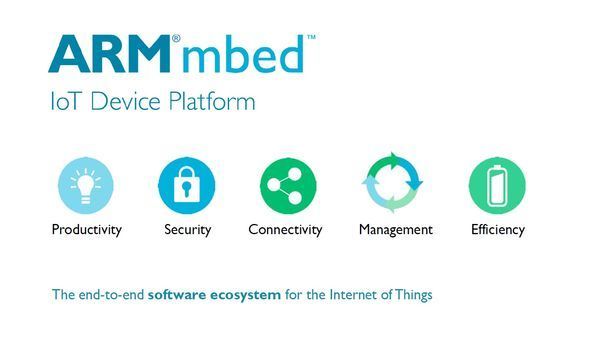
Mbed OS 5.7.1 released
"We are pleased to announce the Mbed OS 5.7.1 release is now available. This is the latest patch release based on the feature set introduced by Mbed OS 5.7. Summary This patch release includes new target support for the STM NUCLEO_L433RC-P board. Silicon Labs' sleep management HAL has been updated with better MBed RTOS interoperability. Additionally, ST brought several improvements to their Low Power Timer HAL. Analog Devices updated their EV_COG_ADx0xxLZ boards, bringing ARMC6 compiler support." [...]
Ciência e Tecnologia

Revealing chirality of light in ultra-thin optical fibers
"A group of scientists led by Professor Mark Sadgrove at Tohoku University's Research Institute for Electrical Communications (RIEC) has revealed a fundamental aspect of chirality of light in ultra-thin optical fiber. Nanofibers using the chiral property may be important components of next generation networks. Chirality is a property commonly found in nature where the reflected version of an object does not perfectly overlap with the original object when superimposed. Human hands are the best known examples of chiral objects - the left and right hand are mirror images - but chirality is found throughout nature, including at scales as small as molecules, photons of light and even fundamental particles. Recently, chirality was revealed to play an important role in the propagation of photons in ultra-thin optical fibers (optical nanofibers). In particular, it was found that the left- or right-handed circular polarization of a photon emitted near the fiber surface determines whether it travels left or right down the fiber." [...]
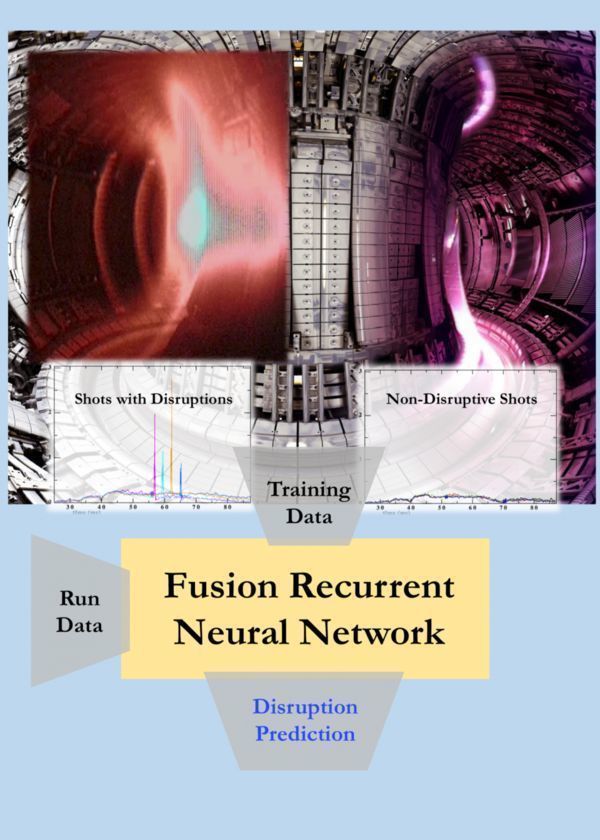
Artificial intelligence helps accelerate progress toward efficient fusion reactions
"Before scientists can effectively capture and deploy fusion energy, they must learn to predict major disruptions that can halt fusion reactions and damage the walls of doughnut-shaped fusion devices called tokamaks. Timely prediction of disruptions, the sudden loss of control of the hot, charged plasma that fuels the reactions, will be vital to triggering steps to avoid or mitigate such large-scale events. Today, researchers at the U.S. Department of Energy’s (DOE) Princeton Plasma Physics Laboratory (PPPL) and Princeton University are employing artificial intelligence to improve predictive capability. Researchers led by William Tang, a PPPL physicist and a lecturer with the rank of professor in astrophysical sciences at Princeton, are developing the code for predictions for ITER, the international experiment under construction in France to demonstrate the practicality of fusion energy. Form of ‘deep learning’ The new predictive software, called the Fusion Recurrent Neural Network (FRNN) code, is a form of “deep learning” — a newer and more powerful version of modern machine learning software, an application of artificial intelligence. “Deep learning represents an exciting new avenue toward the prediction of disruptions,” Tang said." [...]

Research team develops new composite material made of carbon nanotubes
"Carbon nanotubes are extremely lightweight, electrically highly conductive, and more stable than steel. Due to their unique properties, they are ideal for numerous applications, including ultra-lightweight batteries, high-performance plastics and medical implants. However, to date, it has been difficult for science and industry to transfer the extraordinary characteristics at the nano-scale into functional industrial applications. The carbon nanotubes either cannot be combined adequately with other materials, or they lose their beneficial properties once combined. Scientists from the Functional Nanomaterials working group at Kiel University (CAU) and the University of Trento have now developed an alternative method, with which the tiny tubes can be combined with other materials so that they retain their characteristic properties. The research results have now been published in Nature Communications." [...]
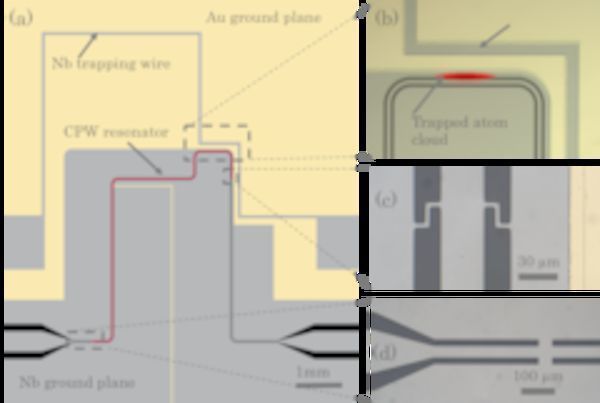
Quantum coupling
"Tübingen University physicists are the first to link atoms and superconductors in key step towards new hardware for quantum computers and Networks. Today’s quantum technologies are set to revolutionize information processing, communications, and sensor technology in the coming decades. The basic building blocks of future quantum processors are, for example, atoms, superconducting quantum electronic circuits, spin crystals in diamonds, and photons. In recent years it has become clear that none of these quantum building blocks is able to meet all the requirements such as receiving and storing quantum signals, processing and transmitting them. A research group headed by Professors József Fortágh, Reinhold Kleiner and Dieter Kölle of the University of Tübingen Institute of Physics has succeeded in linking magnetically-stored atoms on a chip with a superconducting microwave resonator. The linking of these two building blocks is a significant step towards the construction of a hybrid quantum system of atoms and superconductors which will enable the further development of quantum processors and quantum networks." [...]

New depth sensors could be sensitive enough for self-driving cars
"For the past 10 years, the Camera Culture group at MIT’s Media Lab has been developing innovative imaging systems — from a camera that can see around corners to one that can read text in closed books — by using “time of flight,” an approach that gauges distance by measuring the time it takes light projected into a scene to bounce back to a sensor. In a new paper appearing in IEEE Access, members of the Camera Culture group present a new approach to time-of-flight imaging that increases its depth resolution 1,000-fold. That’s the type of resolution that could make self-driving cars practical. The new approach could also enable accurate distance measurements through fog, which has proven to be a major obstacle to the development of self-driving cars. At a range of 2 meters, existing time-of-flight systems have a depth resolution of about a centimeter. That’s good enough for the assisted-parking and collision-detection systems on today’s cars." [...]
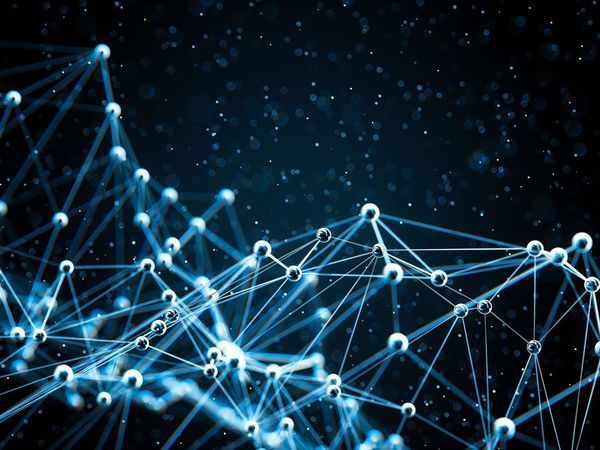
Rice U. physicists discover new type of quantum material
"Predictions lay groundwork for experiments to create ‘Weyl-Kondo semimetal’ U.S. and European physicists searching for an explanation for high-temperature superconductivity were surprised when their theoretical model pointed to the existence of a never-before-seen material in a different realm of physics: topological quantum materials. In a new study due this week in the Early Edition of the Proceedings of the National Academy of Sciences (PNAS), Rice University theoretical physicist Qimiao Si and colleagues at the Rice Center for Quantum Materials in Houston and the Vienna University of Technology in Austria make predictions that could help experimental physicists create what the authors have coined a “Weyl-Kondo semimetal,” a quantum material with an assorted collection of properties seen in disparate materials like topological insulators, heavy fermion metals and high-temperature superconductors. All these materials fall under the heading of “quantum materials,” ceramics, layered composites and other materials whose electromagnetic behavior cannot be explained by classical physics. In the words of noted science writer Philip Ball, quantum materials are those in which “the quantum aspects assert themselves tenaciously, and the only way to fully understand how the material behaves is to keep the quantum in view.” These quirky behaviors arise only at very cold temperatures, where they cannot be masked by the overwhelming forces of thermal energy. The most celebrated quantum materials are the high-temperature superconductors discovered in the 1980s, so named for their ability to conduct electrical current without resistance at temperatures well above those of traditional superconductors. Another classic example is the heavy fermion materials discovered in the late 1970s." [...]
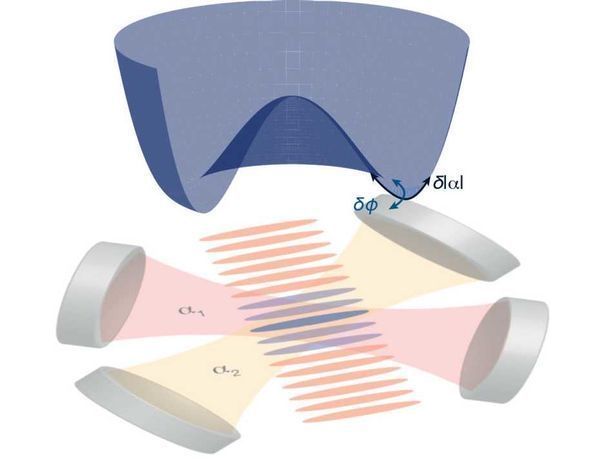
Real-time observation of collective quantum modes
"When symmetries in quantum systems are spontaneously broken, the collective excitation modes change in characteristic ways. Researchers at ETH have now directly observed such Goldstone and Higgs modes for the first time. A cylindrical rod is rotationally symmetric – after any arbitrary rotation around its axis it always looks the same. If an increasingly large force is applied to it in the longitudinal direction, however, it will eventually buckle and lose its rotational symmetry. Such processes, known as “spontaneous symmetry breaking”, also occur in subtle ways in the microscopic quantum world, where they are responsible for a number of fundamental phenomena such as magnetism and superconductivity. A team of researchers led by ETH professor Tilman Esslinger and Senior Scientist Tobias Donner at the Institute for Quantum Electronics has now studied the consequences of spontaneous symmetry breaking in detail using a quantum simulator." [...]
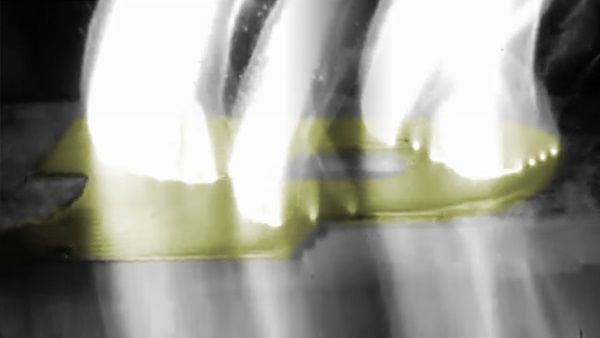
Inkjet-printed thermite combines energetic materials and additive manufacturing
"Researchers have developed a method to deposit tiny amounts of energetic materials (explosives, propellants, and pyrotechnics) using the same technology as an inkjet printer. This research, which combines Purdue expertise in both energetic materials and additive manufacturing, allows energetic materials to be deposited with unprecedented levels of precision and safety. “Energetic materials is a fairly understood field, and so is additive manufacturing,” said Allison Murray, a Ph.D. candidate in Mechanical Engineering, who built the custom inkjet printer. “What’s unique about this project is the intersection of those two fields, and being able to safely deposit energetic materials with this level of precision.” Many micromechanical systems incorporate energetic materials in their operation; for example, an automotive airbag deploys using a small amount of solid propellant. But as devices get smaller, the need for micro-level energetics becomes more critical. “Our solution is to combine two components as we’re printing them,” said Jeff Rhoads, professor of Mechanical Engineering, and principal investigator on the project." [...]

Growing organs a few ink drops at a time
"Printed replacement human body parts might seem like science fiction, but this technology is rapidly becoming a reality with the potential to greatly contribute to regenerative medicine. Before any real applications, "bioprinting" still faces many technical challenges. Processing the bio-ink and making it stick to itself and hold the desired printed gel structure have been proving particularly difficult especially in inkjet printing. Few methods currently exist for gluing bio-ink droplets together and these do not work for every kind of cell, motivating new alternative approaches. Building on their previous work, researchers at Osaka University have now refined an enzyme-driven approach to sticking biological ink droplets together, enabling complex biological structures to be printed. They recently published their findings in Macromolecular Rapid Communications." [...]
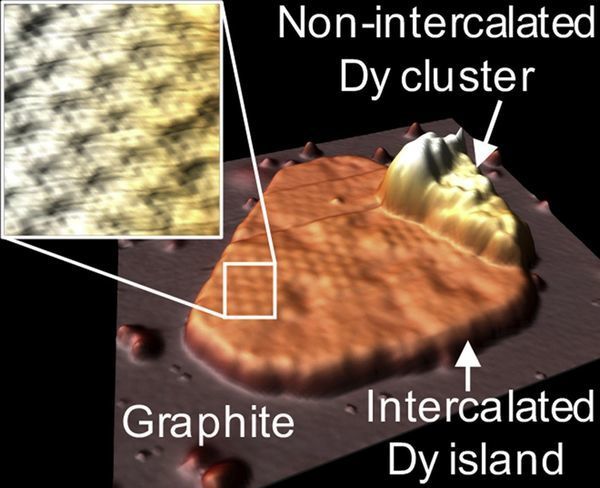
Getting under graphite’s skin: A recently discovered method of layering metals with the 2D material may lead to brand new properties
"Scientists at the U.S. Department of Energy’s Ames Laboratory have discovered a new process to sheathe metal under a single layer of graphite which may lead to new and better-controlled properties for these types of materials. Graphene—two-dimensional graphite—was first produced in 2004, and because electrons move rapidly along its surface, holds great promise as a useful material in applications as diverse as quantum computing, solar cells, catalysis, and sensing. In order for graphene to live up to that potential, fundamental discovery science at Ames Laboratory is working to master its assembly in combination with other materials—a tricky, delicate process performed in ultra-high vacuum lab environments at the atomic scale. The researchers encapsulated dysprosium, a magnetic rare-earth metal, by bombarding the top layer of bulk graphite with ions to create defects on its surface, followed by high-temperature deposition of the metal. It resulted in “mesas” or islands of dysprosium underneath a single layer of graphene. The formations are significantly different than anything the Laboratory’s two-dimensional materials experts have ever seen." [...]

‘Graphene-like’ nanocomposite battery boost for smartphones, tablets and laptops
"Scientists have a developed a new nanocomposite material that boosts battery life and improves the performance of everyday gadgets such as smartphones, tablets and laptops. Working with researchers from Henan Polytechnic University in China, scientists from The University of Manchester’s School of Materials have developed the nanocomposite which combines the chemical structure of Lithium ion batteries with MXene, a 2D material with a ‘graphene-like’ structure and other unique properties. The research is being published in Journal of Alloys and Compounds. Lithium ion batteries are the battery of choice for all major smartphone and tablet manufacturers such as Samsung, Apple and Sony. They are also used in many other gadgets ranging from digital cameras to wearable tech like Fitbits and smartwatches. These kinds of batteries are popular with the manufacturers because they have higher power density, larger power output and a longer lifecycle when compared to previous battery technologies." [...]

Metal Printing Offers Low-Cost Way to Make Flexible, Stretchable Electronics
"Researchers from North Carolina State University have developed a new technique for directly printing metal circuits, creating flexible, stretchable electronics. The technique can use multiple metals and substrates and is compatible with existing manufacturing systems that employ direct printing technologies. “Flexible electronics hold promise for use in many fields, but there are significant manufacturing costs involved – which poses a challenge in making them practical for commercial use,” says Jingyan Dong, corresponding author of a paper on the work and an associate professor in NC State’s Edward P. Fitts Department of Industrial & Systems Engineering. “Our approach should reduce cost and offer an efficient means of producing circuits with high resolution, making them viable for integrating into commercial devices,” Dong says. The technique uses existing electrohydrodynamic printing technology, which is already used in many manufacturing processes that use functional inks. But instead of ink, Dong’s team uses molten metal alloys with melting points as low as 60 degrees Celsius." [...]
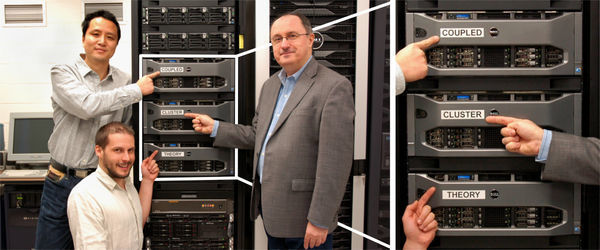
Quantum leap: Novel computational approach launches new paradigm in electronic structure theory
"A group of Michigan State University (MSU) researchers specializing in quantum calculations has proposed a radically new computational approach to solving the complex many-particle Schrödinger equation that holds the key to explaining the motion of electrons in atoms and molecules. By understanding the details of this motion, one can determine the amount of energy needed to transform reactants into products in a chemical reaction, or the color of light absorbed by a molecule, and ultimately accelerate the design of new drugs and materials, better catalysts and more efficient energy sources. The work, led by Piotr Piecuch, a University Distinguished Professor in the MSU Department of Chemistry and an adjunct professor in the Department of Physics and Astronomy in the College of Natural Science, was published in the Dec. 1 issue of Physical Review Letters. Also involved in the work are fourth-year graduate student J. Emiliano Deustua and senior postdoctoral associate Jun Shen. The group provides details for a new way of obtaining highly accurate electronic energies by merging the deterministic coupled-cluster and stochastic Quantum Monte Carlo approaches. Although the general mathematical theory of the microscopic world of quantum mechanics is well established, the challenges have been centered on solving the complicated equations born of the exact application of the laws." [...]
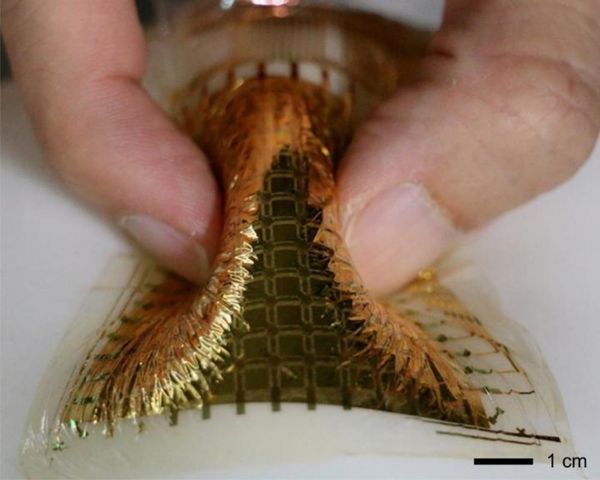
Flexible and transparent pressure sensor
"Researchers at the University of Tokyo working with American colleagues have developed a transparent, bendable and sensitive pressure sensor. Healthcare practitioners may one day be able to physically screen for breast cancer using pressure-sensitive rubber gloves to detect tumors, owing to this newly developed sensor. Conventional pressure sensors are flexible enough to fit to soft surfaces such as human skin, but they cannot measure pressure changes accurately once they are twisted or wrinkled, making them unsuitable for use on complex and moving surfaces. Additionally, it is difficult to reduce them below 100 micrometers thickness because of limitations in current production methods. To address these issues, an international team of researchers led by Dr. Sungwon Lee and Professor Takao Someya of the University of Tokyo’s Graduate School of Engineering has developed a nanofiber-type pressure sensor that can measure pressure distribution of rounded surfaces such as an inflated balloon and maintain its sensing accuracy even when bent over a radius of 80 micrometers, equivalent to just twice the width of a human hair. The sensor is roughly 8 micrometers thick and can measure the pressure in 144 locations at once." [...]

Chinese Team Develops Low-Cost, Highly Accurate Method for 3D Printing Patient-Specific Liver Models
"3D printed medical models are making their way into hospitals around the world as medical professionals recognize their value. Patient-specific anatomical models offer physicians the opportunity to physically touch and examine complicated internal structures, understanding the extent and precise locations of issues to be addressed through medical procedures. Patients also benefit from the models, which can be used to inform them of specifics of both condition and treatment. Research performed worldwide is building upon knowledge to create ever-better models and systems for creating patient-specific models, such as was recently seen in Minnesota. While in that case, better models referred to their lifelike textures, other improvements have been in focus for research in China, as a team of researchers led by Professor Cheng Shujie from the Affiliated Hospital of Hebei University are now introducing precise 3D printed liver models that reproduce complex anatomies at a much lower cost than had been previously available. Hepatic surgeries can be complex and confusing for surgeons working without predetermined pathways and plans from a 1:1 exact model, and livers have proven a viable target for 3D printing medical models." [...]
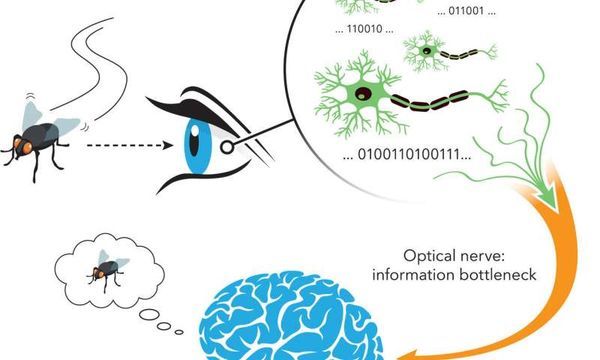
Unifying the theories of neural information encoding
"Scientists at IST Austria and in Paris develop framework connecting and extending previous theories on how neurons in our sensory systems select and transmit information | New theory gives concrete predictions for previously unstudied coding regimes Digital video cameras have the capability to record in incredible detail, but saving all that data would take up a huge amount of space: how can we compress a video—that is, remove information—in such a way that we can’t see the difference when it is played back? Similarly, as we go about our daily lives, our eyes are flooded with visual information, but the neurons in our eyes have certain constraints—just like data engineers. Thus, given this rich set of stimuli, how do neurons select what to extract and send on to the brain? Neuroscientists have been asking this question for decades, and had previously used several different theories to explain and predict what neurons will do in certain situations. Now, Matthew Chalk (a former postdoc at IST Austria, currently at the Vision Institute in Paris), IST Austria Professor Gašper Tkačik, and Olivier Marre, who heads a retinal research lab at the Vision Institute, have developed a framework that unites the previous theories as special cases, and enables them to make predictions about types of neurons not previously described by any theory. One of the main goals of sensory neuroscience is to predict neural responses using mathematical models." [...]
Modelos 3D
Com a disponibilidade de ferramentas que permitem dar azo a nossa imaginação na criação de peças 3D e espaços como o thingiverse para as publicar, esta rubrica apresenta alguns modelos selecionados que poderão ser úteis.
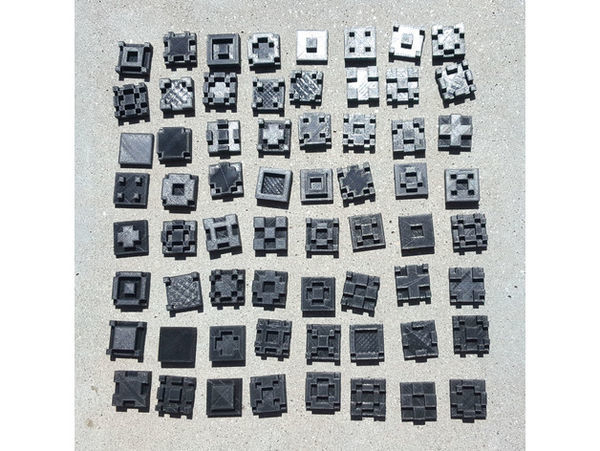
Symmetric Bit Encyclopedia, 6x6
"All the four axis symmetrical possible combinations in a grid of 6x6 boxes.From the total of 68.719.476.736 possible objects only these 64 fulfill the aesthetic (or functional?) condition of having a four axis symmetry.They are magic! Have them all! " [...]
Documentação
A documentação é parte essencial do processo de aprendizagem e a Internet além de artigos interessantes de explorar também tem alguma documentação em formato PDF interessante de ler. Todos os links aqui apresentados são para conteúdo disponibilizado livremente pelo editor do livro.
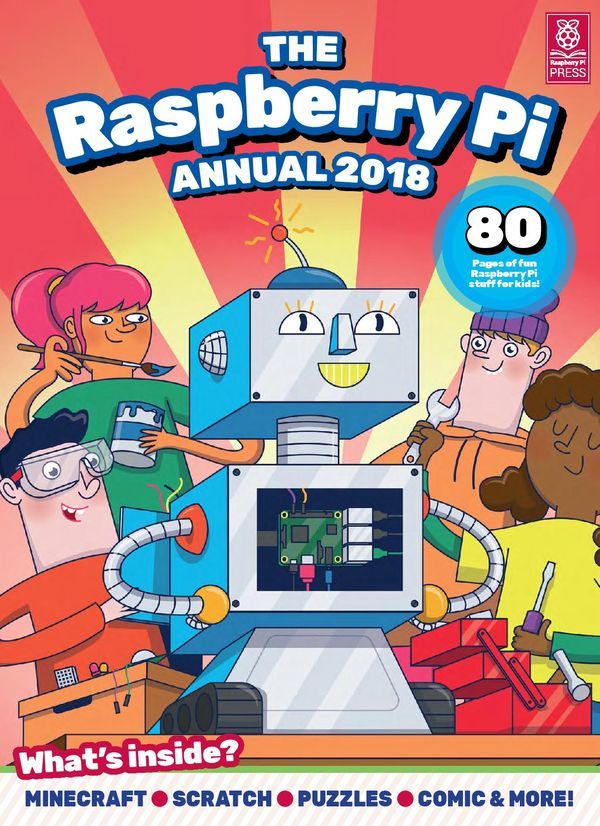
The Raspberry Pi Annual 2018
"The Raspberry Pi Annual 2018 is an educational book packed with cartons, quizzes, and computer code. It’s entertaining for kids of all ages, and the perfect introduction to The Raspberry Pi – the British-built, credit card-sized computer. Get started. Set up your Raspberry Pi & use it for the first time Solve puzzles. Spot the difference, word searches, mazes & more! Make projects." [...]
Projetos Maker
Diversos Projetos interessantes.
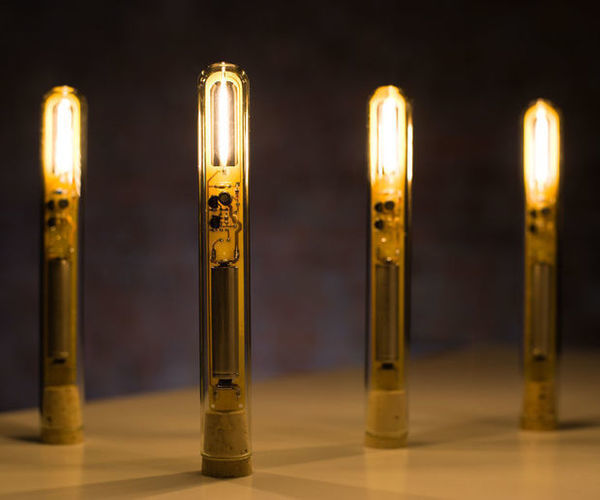
Joule Thief Filament Lamp
"LED filaments are thin, stick like LEDs. They are used in many Edison bulb look-a-like LED bulbs.Each of those thin sticks contain many - 20 to 30 LEDs connected in series. So they are quite bright and energy efficient, however typically require over 70V to turn on.I wanted to make a small, battery operated lamp using those LED filaments. After trying out many circuits, I discovered a very simple circuit to light a filament LED with only one, 1.5V battery. " [...]
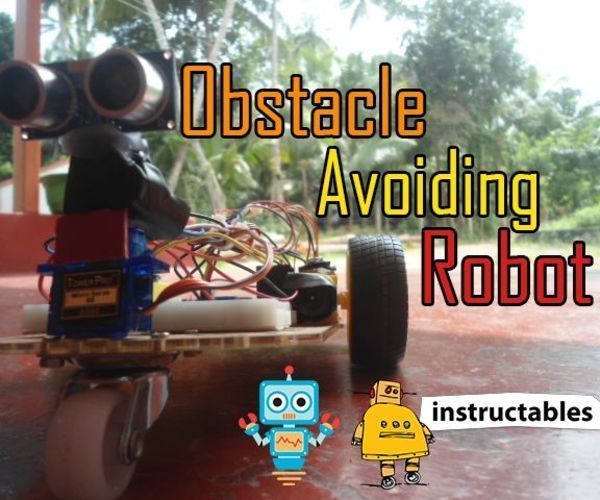
DIY Obstacle Avoiding Robot
"This time its a obstacle avoiding robot, which use a ultrasonic sensor , two motors , a motor driver and arduino unoto avoid objects. In this project a servo motor is shown but it is not used.It happens because I didn't find a ultrasonic bracket and I try to make one by my self it was successful but it was programmed to rotate and find the nearest area to go but it didn't rotate properly so I reprogrammed it not to rotate and if it detects a object it must go backwards and turn to right and continue the process. It is not a big problem and you can find a ultrasonic sensor bracket and fix it to the servo motor. I will put both codes, with servo and without servo. And lets make it!!! " [...]
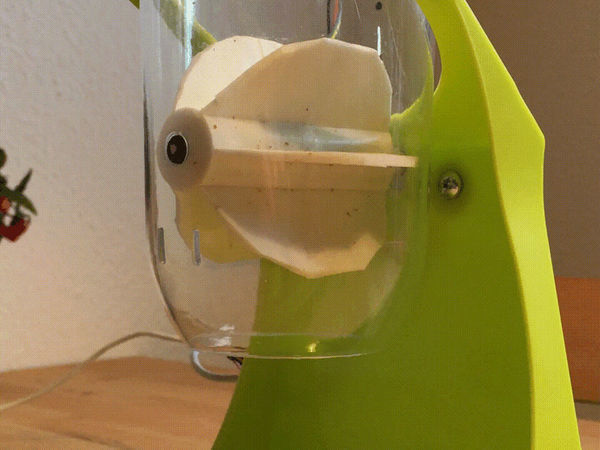
MyFeeder
"Remote semi-automatic feeding machine using Particle Photon & Blynk. When I travel with my family, we stay in responsibility to our animal companions opposite and put my cat "Max" (chapter F) together with his water- and food bowl in my carport and leave him the feeding arrangement of the filled up to the top of the bowl. This works well over a weekend, but what longer holiday periods are planned? Try again the neighbors or friends? Inspired by the project of Malte Müller, I built my own (cat) food dispenser (and got a surprise). " [...]

Jens Temperature Sensor Coaster
"This coaster detects the temperature of a cup. You get a signal when it is ready to drink. Temperature Sensor Coaster I was drinking hot coffee. First I burned my mouth on it. Then I forgot about it and it cooled down to room temperature. With a sore mouth and cold coffee I realized that I had failed to drink a cup of coffee." [...]

Controlled Fish Pond
"In this project I will create how to monitor temperature, Switch On/Off Fish Feeder & Fish Waterpump It's very useful for your fish pond. Using Cayenne App for easier setup. " [...]
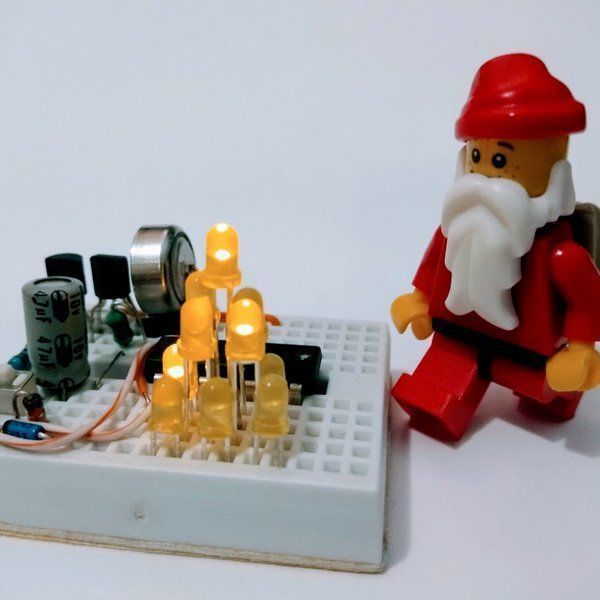
Joule Thief Mini Christmas Tree
"A minimalist 1.5V coin cell led tree with all components and power source confined within a mini breadboard. This is a holiday project targeting the 2017 December HackaDay coin cell challenge.The objective is to employ a 1.5V button cell to drive microcontroller based holiday led display.A minimalist design with all components and power source confined within a mini breadboard.A joule thief circuit is used to step up the voltage from the 1.5V button cell to power the microcontrollers and leds. " [...]
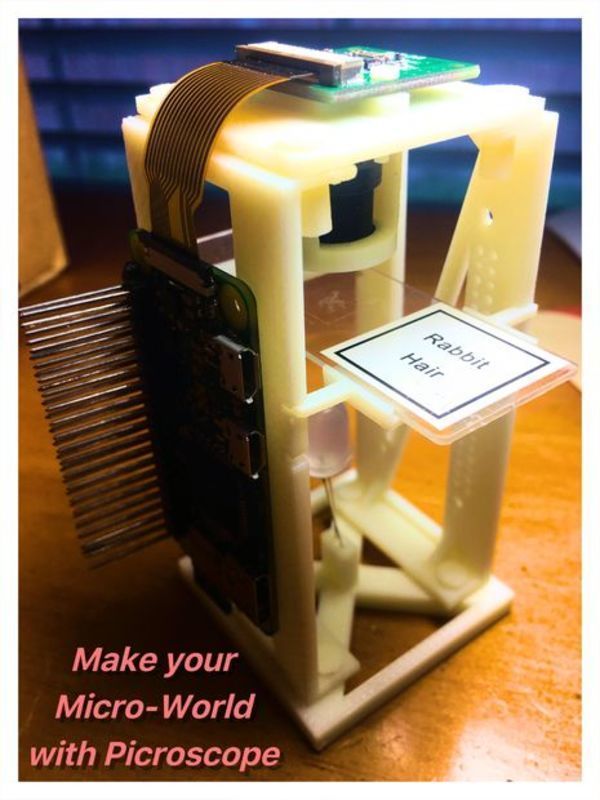
Picroscope: Low-Cost Interactive Microscope
"My name is Picroscope. I am an affordable, DIY, RPi-powered microscope that allows you to create and interact with your very own micro-world. I am a great hands-on project for someone who is interested in bio-technology and the worlds of microbiology, optics, or DIY electronics. I can be built by pretty much anyone, regardless of age or skill-level. Whether you are a middle schooler looking for a cool science project, a high school student in a biology class, a maker in your garage, or even a scientist doing experiments in biophysics, my goal is to help you better understand the microscopic world that surrounds you. With the help of a few electronic components and a 3-D Printer, I can be built within a day and a 60 dollar budget!" [...]

Radiation Detector
"Building a "semi-directional" radiation and cosmic-ray detector is not an easy feat. I aimed to design, construct, and test a portable and versatile Silicon photo-diode Radiation Detector suitable for the 5keV-10MeV detection range to accurately quantify low energy gamma-rays emanating from radioactive sources. In this Instructables, I'll first explain briefly some theoretical concepts underlying the operation of the detector and core properties. I'll then take you through the different tests undertaken and the relevant research investigated during the multiple design iterations. Let's start with a little background science before we go on to the construction :) Pay attention if you don't want to become a radio-active zombie: With radiation sources precaution is key - it is not safe to be around sources of high-radiation, and this device should NOT be used as a reliable way of detecting harmful radiation in the environment. " [...]

TV Commercial Volume Suppressor
"My dad constantly whines about how annoying it is when commercials are considerably louder than their accompanying program. Since his complaining was becoming more annoying than the actual commercials, I decided to create a little gadget that would solve both problems simultaneously. The gizmo I created will automatically lower the volume of the TV when it gets too loud, and can be programmed to work on any device that uses an IR based remote control. " [...]

Arduino Based MIDI Fighter(Touch Sensitive)
"MIDI stands for Musical Instrument Digital Interface. Here, we are making a touch sensitive MIDI fighter. It has 16 pads. these can be increased or decreased. Here I have used 16 because of the limited arduino pins. Also I have used analog input pins (A0,A1,A2,A3,A4) as digital input." [...]

IR Remote Hacking and Automation
"Hello guys, From my childhood itself I was wondering about the TV remote controller and how does it work.This instructable tells the story how I managed to decode/hack an old remote controller and used it for home automation. " [...]

Troll Your Neighbors By Multiple Fake SSIDs Using ESP8266!
"After we tinkered with a really useful project to convert esp8266 to a WiFi Repeater, now it’s time for having fun! End year is the best time to troll your annoying neighbors (or be the annoying one instead), maybe we already did this by renaming our WiFi name into some weird description like “Your Momma Is So Fat” or “Your Music Taste Is Suck!”, but this article helps you to disturb your evil neighbors even further by broadcasting multiple SSIDs at the same time. There’s no limit to your SSID list so that you can use this for advertisement. Are You Ready, Evil? To do this project you’ll need an esp8266 module like NodeMCU and a micro USB cable. " [...]
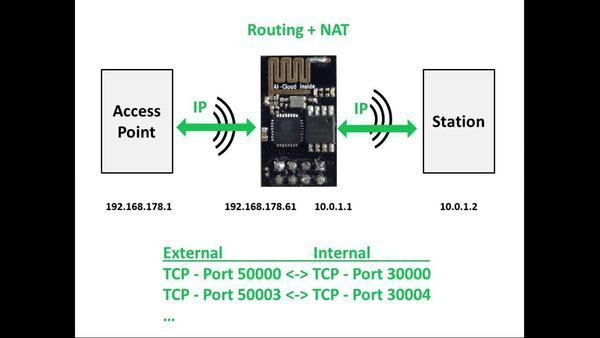
esp wifi repeater
"A full functional WiFi repeater (correctly: a WiFi NAT router) This is an implementation of a WiFi NAT router on the esp8266 and esp8285. It can be used as range extender for an existing WiFi network. The esp acts as STA and as soft-AP and transparently forwards any IP traffic through it. As it uses NAT no routing entries are required neither on the network side nor on the connected stations. Stations are configured via DHCP by default in the 192.168.4.0/24 net and receive their DNS responder address from the existing WiFi network. Measurements show, that it can achieve about 5 Mbps in both directions, so even streaming is possible." [...]
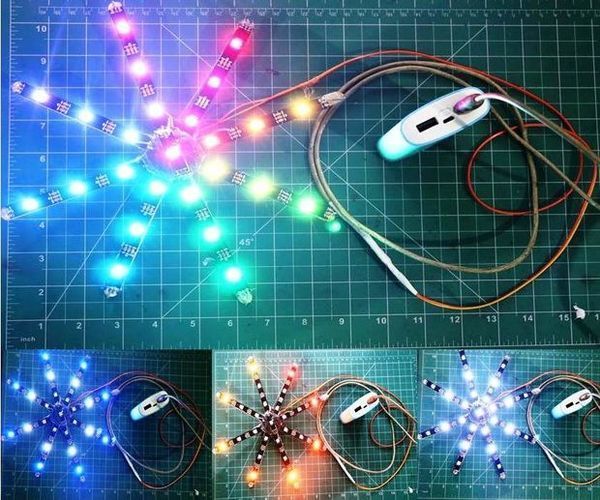
Christmas Tree Top Star Bling
"A cool bright and colorful LEDs star to bling your Christmas tree this holiday season made from addressable Neopixel LED strips and Arduino microcontroller. " [...]
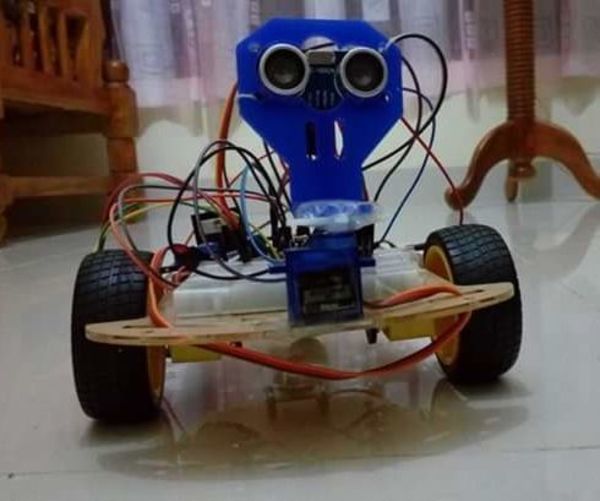
Obstacle Avoiding Robot (Arduino)
"Here i'm going to instruct you about making an Obstacle Avoiding Robot based on Arduino. I hope to do step by step guide on making this robot in very easy way. An obstacle avoiding robot is a fully autonomous robot which can be able to avoid any obstacle which it face when it move. Simply, when it met an obstacle while it moving forward, automatically stop moving forward and makes a step back. Then it looks it's two sides left & right and starts to move the best possible way; which means either in left direction if there is another obstacle in right or in right direction if there is another obstacle in left side. The obstacle avoiding robot is very helpful and it is the base of many large projects such as Automatic cars, robots used in Manufacturing factories, even in robots used in spacecrafts." [...]
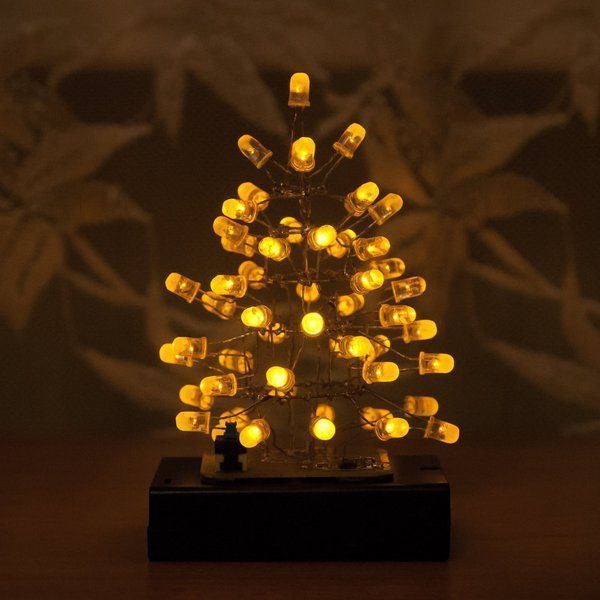
Flickering LED Christmas Tree
"Just 50 candle flicker LEDs powered by 3 AA batteries Forward voltage drop across the LED is 2.0-2.2V, so I decided to connect them in parallel, and to use step-down DC-DC, which converts 3.0-4.5V from 3xAA to 2.0V. " [...]
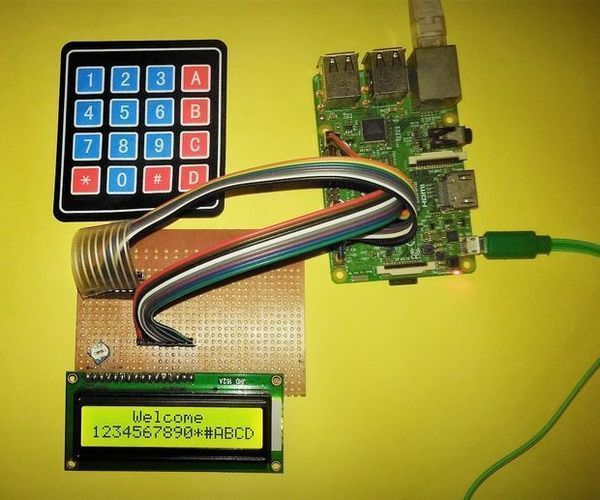
Interface 16x2 Alphanumeric LCD And4x4 Matrix Keypad With Raspberry Pi3
"In this instructables, we explain how to interface 16x2 LED and 4x4 matrix keypad with Raspberry Pi3. We use Python 3.4 for developing the software. You can choose Python 2.7 also, with little alterations" [...]
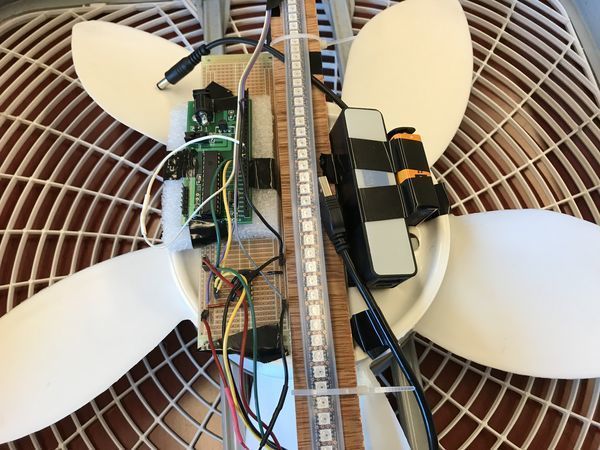
FAN-tastic POV Display
"Sight is one of our most important senses, and with the creation of digital images, there come a wave of different ways to display beautiful images and videos. Most of these displays uses stationary pixels to show arbitrary images or videos. Because the human eye retains a visual continuation of images with a succession of still frames, the video appears when the images are played by very quickly. The beauty of a persistence of vision (POV) display is that it uses the same optical illusion to display images. Much like how stationary displays use the optical illusion to display videos by playing multiple still frames rapidly, the POV display uses the same illusion to display an image by rendering each “row” of pixels individually very rapidly. The design of this multifunction display is based on the concept of persistence of vision with the utility of a fan." [...]
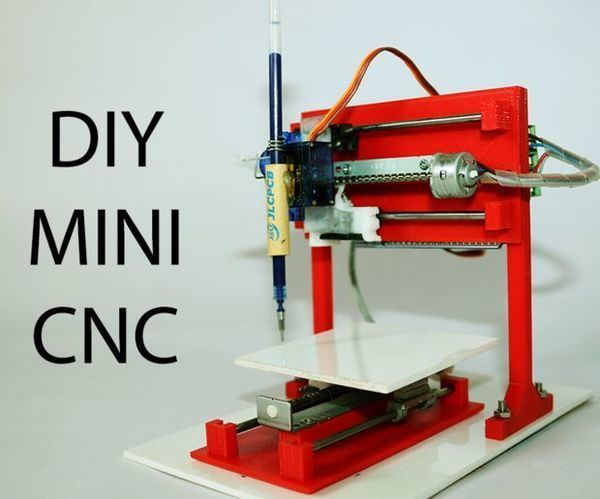
DIY Mini CNC Plotter Machine
"Mini CNC plotter machine with 3D printed frame. I have made a micro size CNC plotter machine out of old scrap DVD drive stepper mechanism The best part of this machine is i 3D print its frame to give it very compact look, all the 3D parts i have printed on tevo tarantula 3d Printer @ 0.15 layer hight, 60% infill PLA T controller this CNC machine we need a microcontroller board called arduino Nano and we need motor driver IC for each stepper motor that is L293D IC all the electronics components are solder on a costume made PCB I prepared a PCB layout and order it from JLCPCB.COM as soon as you get PCB you just need to solder header pins,PCB terminals & CNC is ready to load code to run. JCLPCB is PCB manufacturing company they provide upto 10 prototype PCB in just 2$ with first shipping free it was a great deal. " [...]
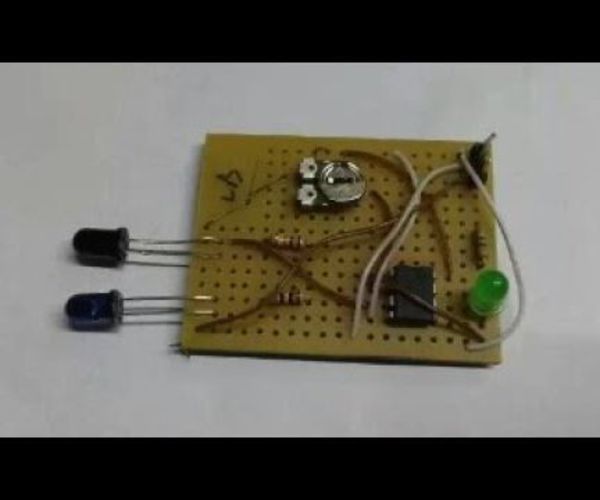
How to Make IR Sensor
"Ir sensor used to dectect any movement made in front of the two sensors which is IR led and photodiode. The range of Ir sensor can be adjusted using variable resistor(preset) . the range depends on Quality and specification of Ir led and Photodiode used. Ir sensor can be used for making hobby projects like Line follower robot without using a microcontroller, obctable detector robot or obstacle avoider robot. Ir sensor can also be used for home automation like automatic water dispenser, automatic sliding door,automatic sliding door. Since it has wide range of applications it can also be used for security purpose for detecting trespassing and you can create your own applications too." [...]
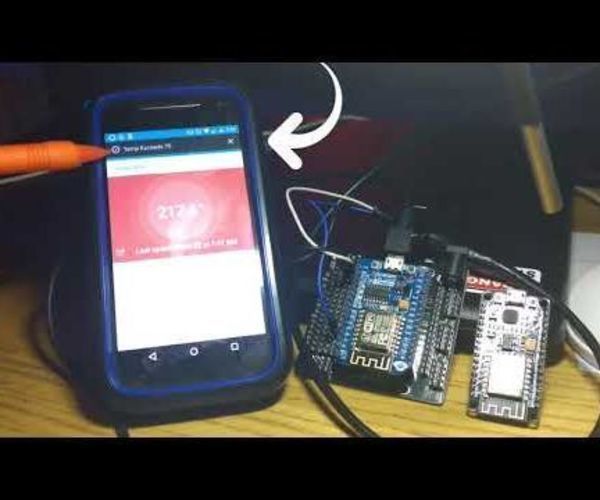
ESP8266/ESP-12 Arduino Powered SmartThings DS18B20 Temp. Sensor
"We all like to know what the current room temperature is, and sometimes what the temperature is in another room, or maybe even in your vacation house on the other side of the world. Maybe you want to monitor the temperature in your pet Lizard's house? You've come to the right place to learn how to build your very own SmartThings connected DS18B20 Temp. Sensor with an ESP8266 and Arduino. Check out this Vid and read on. " [...]
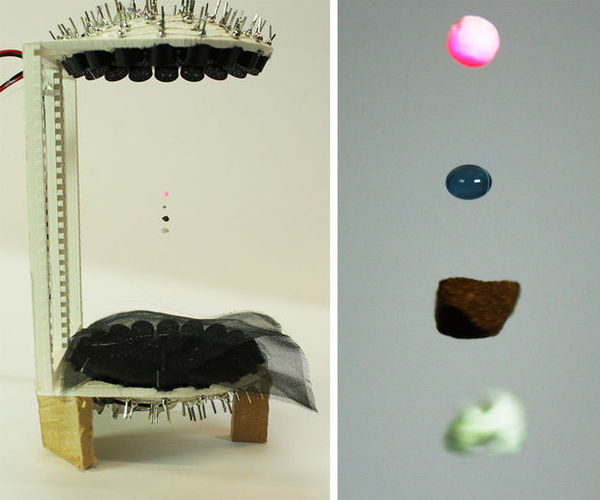
Acoustic Levitator
"Use acoustic waves to hold in mid-air samples such as water, ants or tiny electric components. This technology has been previously restricted to a couple of research labs but now you can make it at your home. If you want more background and details you can check our Open Access papers: More details and supplementary information about this levitatorHow Acoustic Tractor Beams WorkAcoustic Delay Lines for Compact Tractor beamsDo not forget to watch the attached video. The first video is the instructions whereas the second one is a fantastic video by Physics Girl explaining the physics behind it. " [...]

Foosball Scoreboard
"Two months ago I was build Foosball table. It looks OK, but I miss Arduino. I didn't like scoring units, so I was made electronic scoreboard. Main board I was chose Arduino Pro mini 5V. LCD display I was chose 16x02. For ball (goal) detector was used IR led for transmitter and TSOP34838 for receiver." [...]
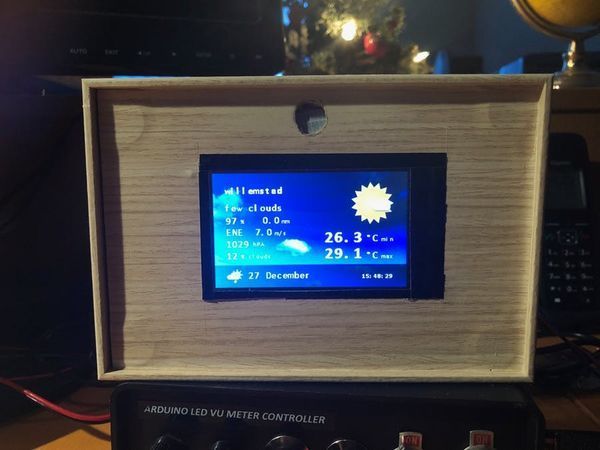
NodeMCU and Nextion Weather Forecast Station
"Weather station Not very original but I decided to also build a weather station project. My version is created with a NodeMCU (8266) controller, a BME280 sensor and a Nextion display. The code connects the 8266 to the local WiFi network, reads the current time from the nearest NTP server and then loops displaying 2 screens on the Nextion display. It refreshes the time after approx. 24 hours. The 1st page displays the date and time, initially set by the NTP server and the local temperature, humidity and air pressure read by the BME280 sensor." [...]
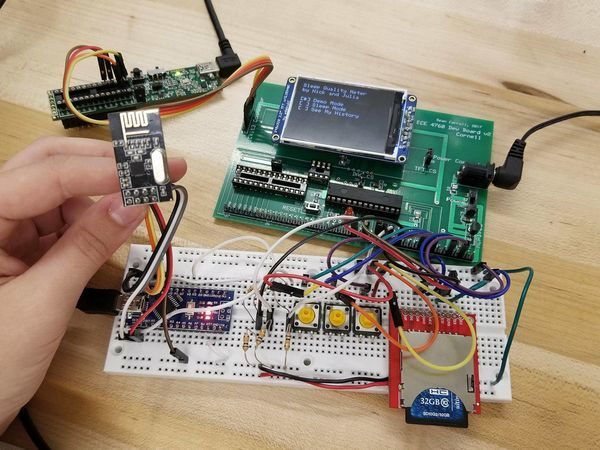
Sleep quality meter
"A sleep quality meter that uses heartrate, breathing rate, and movement metrics to judge the quality of the user's sleep. The What and the Why We created a system that monitors the quality of the sleep of its user. As busy engineers, we must make the most out of all the sleep that we can get. By creating various metrics to measure the quality of sleep, our project could be used to determine the factors that lead to an optimal sleep at an individual level. Maybe the key to a restful sleep for a given person is going to bed before a certain time, avoiding certain foods, at a certain temperature, etc. This project aims to provide a concrete metric for the quality of sleep." [...]
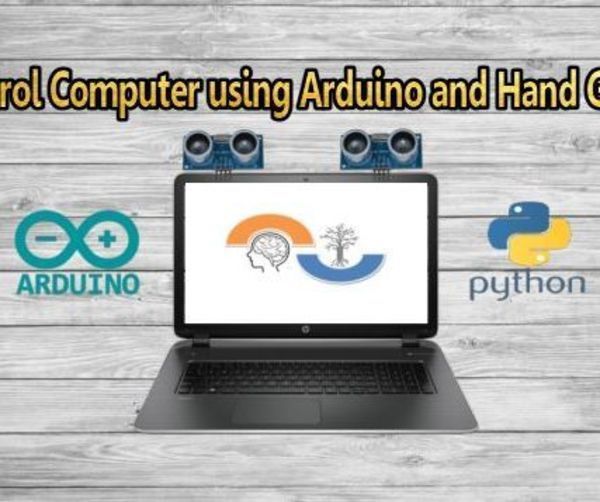
Amazing Control Computer Using Hand Motion and Arduino
"In this project,we are going to learn how to build a technique of gesture controlled Laptops or computers,It based on using the power combination of Arduino and Python. Instead of using a keyboard, mouse or joystick, we can use our hand gestures to control certain functions of a computer like play/pause a video, move left/right in a photo slide show, scroll up/down in a web page and many more,This is why I decided to control VLC Media Player as hand gestures project. The idea behind the project is quite easy by using two Ultrasonic Sensors (HC-SR04) with arduino,We will place the two Sensors on the top of a laptop screen and calculate the distance between the hand and the sensor.Counting on the information from Arduino that is send to the python through the serial port,This information will be then read by python which is running on the computer in order to perform certain actions. Hardware components : 1. Arduino 2. Two Ultrasonic Sensors (HC-SR04) 3." [...]
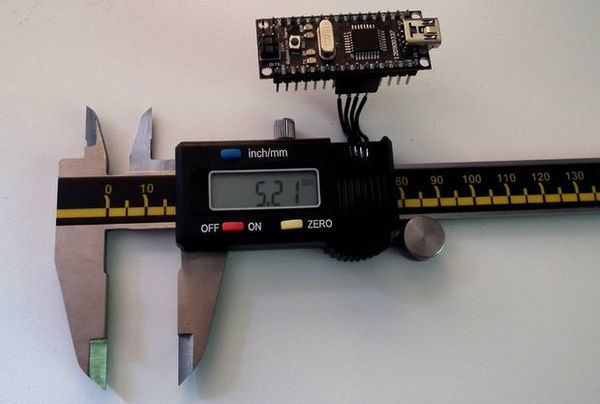
Reading Digital Callipers With an Arduino / USB
"How to use an Arduino to read the signal from a set of digital callipers and send the reading over USB.Why?This might be useful for accurate position sensing in home made / hacked computer aided manufacture systems. Adds USB functionality to your callipers.A great reference on reading digital callipers can be found at:http://www.shumatech.com/support/chinese_scales.htmWhat this instructable adds to the shumatech tutorial is:How to use an Arduino to read the callipers (using very few extra components).Details of another protocol found to be in use on some callipers.Basic Arduino code is provided. " [...]
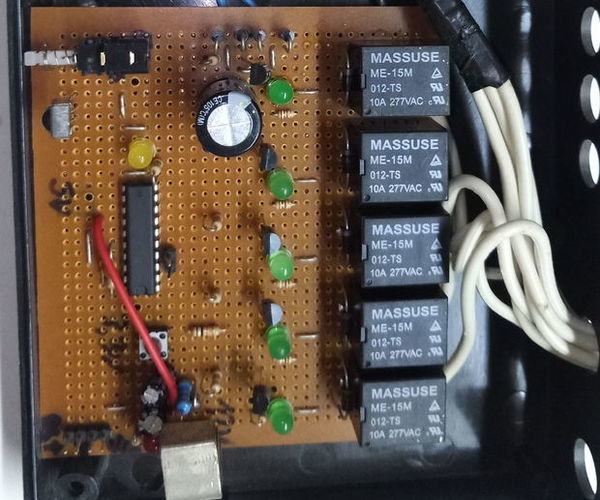
IRControl
"Infrared Control, Using a Texas Instruments MSP430G2553 programmed with Energia IDE (Arduino IDE clone). In the photos I have to mount it in a cabinet, even though it is already with another source and in a plastic cabinet, I promise to update the photos when possible, since it is installed and in use, so I would have to take it for the photos. This project was created using a lot of recycling material and was modified on the fly, I don't have a complete list of materials and I don't have a diagram of the electronic circuit of it, I hope to be able to update this publication with more data. " [...]

Tic Tac Toe Game With Arduino Mega 2560
"Hi every body. This is my third post here. I came back this time with the funny Tic Tac Toe game in a new edition. I searched the web for similar project, but the idea here is unique. I HOPE :) So lets start now. " [...]
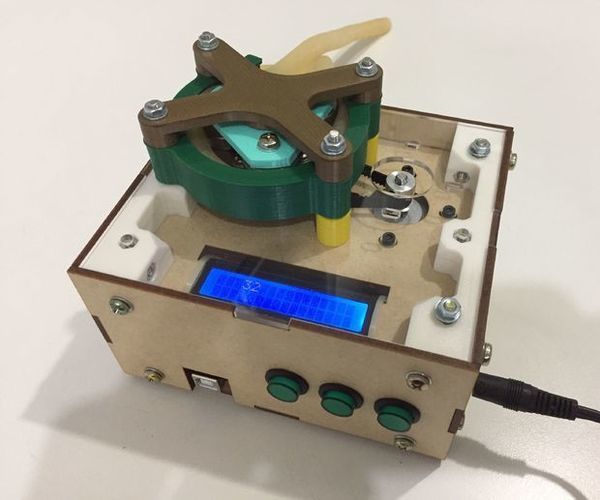
Peristaltic Pump
"This project was inspired by the Waag Society's Biohack Academy: https://biohackacademy.github.io/ https://github.com/biohackacademy One of the Biohack Academy's components is a peristaltic pump. This Instructable builds on the model provided by adding a couple of improvements and features. " [...]
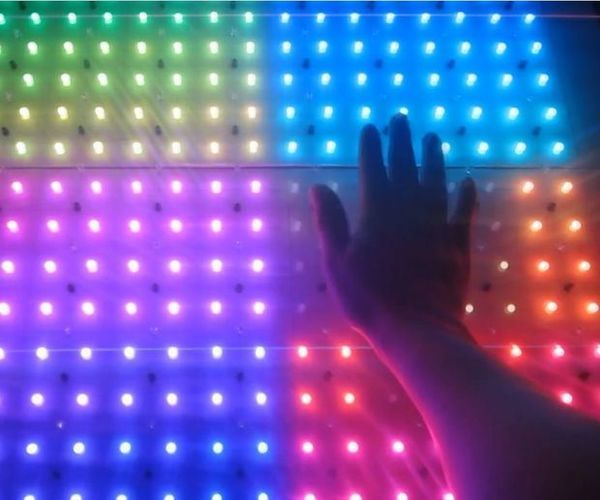
Interactive rgb led table
"First of all, I would say, English is not my mother tongue; so please excuse any errors on my part. In addition to usage as normal LED display, the "INTERACTIVE RGB LED TABLE" is like a "touch screen" made of LEDs with impressive animations. It is used as a dinner table, coffee table, decorated table in a bar, or living room table.... For the project I share below, this interactive LED table is sized in A2 with 256 RGB LEDs, uses infrared emitter and photo-transistor to locate the object on the table and create a nice effect at the corresponding position. " [...]

DTMF and Gesture Controlled Robotic Wheelchair
"In this world a number of people are handicapped. Their life revolves around wheels. This project presents an approach for controlling wheelchair movement using hand gesture recognition and DTMF of a smartphone. DTMF Control :- Conventionally, Wireless-controlled robots use RF circuits, which have the drawbacks of limited working range, limited frequency range and the limited control. Use of a mobile phone for robotic control can overcome these limitations. It provides the advantage of robust control, working range as large as the coverage area of the service provider, no interference with other controllers and up to twelve controllers." [...]
That's all Folks!


